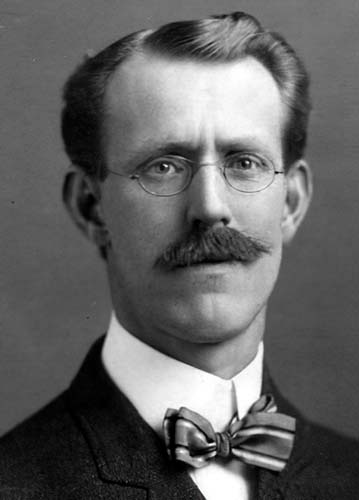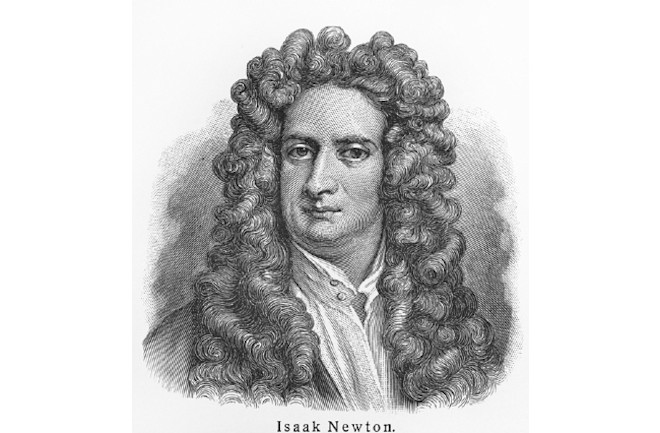Today's selection -- from The Rigor of Angels by William Egginton. The mysteries of one of the most important breakthroughs in physics--quantum mechanics:
“For all its astonishing, mind-bending complexity--for all its blurry cats, entangled particles, buckyballs, and Bell's inequalities--quantum mechanics ultimately boils down to one core mystery. This mystery found its best expression in the letter Heisenberg wrote to Pauli in the fevered throes of his discovery. The path a particle takes ‘only comes into existence through this, that we observe it.' This single, stunning expression underlies all the rest: the wave/particle duality (interference patterns emerge when the particles have not yet been observed and hence their possible paths interfere with one another); the apparently absurd liminal state of Schrodinger's cat ( the cat seems to remain blurred between life and death because atoms don't release a particle until observed); the temporal paradox (observing a particle seems to retroactively determine the path it chose to get here); and, the one that really got to Einstein, if the observation of a particle at one place and time instantaneously changes something about the rest of reality, then locality, the cornerstone of relativity and guarantee that the laws of physics are invariable through the universe, vanishes like fog on a warming windowpane.
“If the act of observation somehow instantaneously conjures a particle's path, the foundations not only of classical physics but also of what we widely regard as physical reality crumble before our eyes. This fact explains why Einstein held fast to another interpretation. The particle's path doesn't come into existence when we observe it. The path exists, but we just can't see it. Like the parable of the ball in the box he described in his letter to Schrodinger, a 50 percent chance of finding a ball in any one of two boxes does not complete the description of the ball's reality before we open the box. It merely states our lack of knowledge about the ball's whereabouts.
“And yet, as experiment after experiment has proven, the balls simply aren't there before the observation. We can separate entangled particles, seemingly to any conceivable distance, and by observing one simultaneously come to know something about the other--something that wasn't the case until the exact moment of observing it. Like the beer and whiskey twins, we can maintain total randomness up to a nanosecond before one of them orders, and still what the one decides to order will determine the other's drink, on the spot, even light-years away.
.jpg) |
| Max Planck is considered the father of quantum theory. |
“The ineluctable fact of entanglement tells us something profound about reality and our relation to it. Imagine you are one of the twins about to order a drink (this should be more imaginable than being an entangled particle about to be observed, but the idea is the same). From your perspective you can order either a whiskey or a beer: it's a fifty-fifty choice; nothing is forcing your hand. Unbeknownst to you, however, in a galaxy far, far away, your twin has just made the choice for you. Your twin can't tell you this or signal it in any way, but what you perceive to be a perfectly random set of possibilities, an open choice, is entirely constrained. You have no idea if you will order beer or whiskey, but when you order it, it will be the one or the other all the same. If your twin is, say, one light-year away, the time in which you make this decision doesn't even exist over there yet. Any signals your sibling gets from you, or any signals you send, will take another year to arrive. And still, as of this moment, you each know. Neither will get confirmation for another year, but you can be confident, you can bet your life's savings on it--a random coin toss in another galaxy, and you already know the outcome.
“The riddles that arise from Heisenberg's starting point would seem to constitute the most vital questions of existence. And yet one of the curious side effects of quantum mechanics' extraordinary success has been a kind of quietism in the face of those very questions. The interpretation of quantum mechanics, deciding what all this means, has tended to go unnoticed by serious physics departments and the granting agencies that support them in favor of the ‘shut up and calculate’ school, leading the former to take hold mainly in philosophy departments, as a subfield of the philosophy of science called foundations of physics. Nevertheless, despite such siloing, a few physicists persisted in exploring possible solutions to the quantum riddles. Some of their ideas have been literally otherworldly.
“In the 1950s, a small group of graduate students working with John Wheeler at Princeton University became fascinated with these problems and kept returning to them in late-night, sherry-fueled rap sessions. Chief among this group was Hugh Everett III, a young man with classic 1950s-style nerd glasses and a looming forehead. Everett found himself chafing at the growing no-question zone that proponents of the Copenhagen interpretation had built around their science. Why should we accept that in one quantum reality, observations somehow cause nature to take shape out of a probabilistic range of options, whereas on this side of some arbitrary line in the sand we inhabit a different, classical reality where observations meekly bow to the world out there? What exactly determines when this change takes place? ‘Let me mention a few more irritating features of the Copenhagen Interpretation,' Everett would write to its proponents: ‘You talk of the massiveness of macro systems allowing one to neglect further quantum effects ... but never give any justification for this flatly asserted dogma.’”
|
|||
| author: William Egginton | |||
| title: The Rigor of Angels | |||
| publisher: Pantheon | |||
| date: | |||
| page(s): 235-237 |
 Edward Stratemeyer
Edward Stratemeyer





